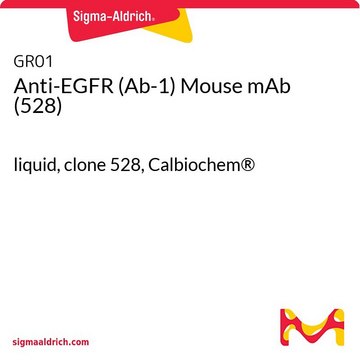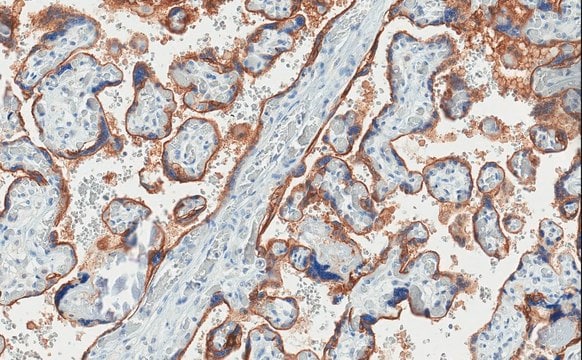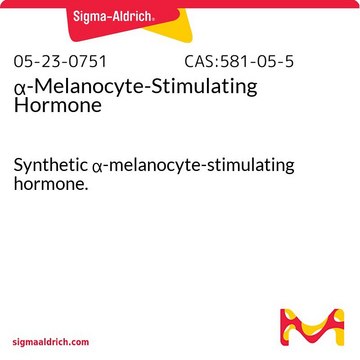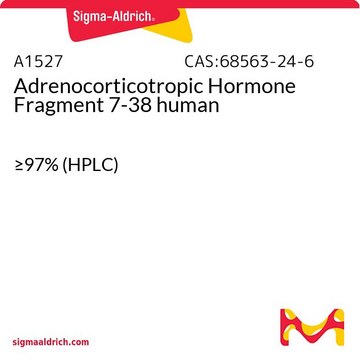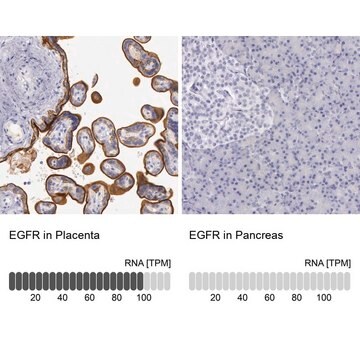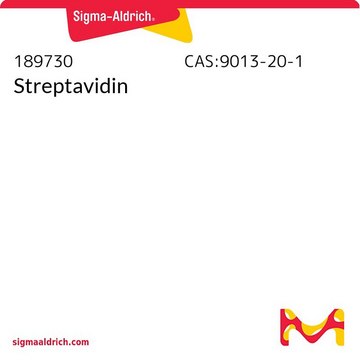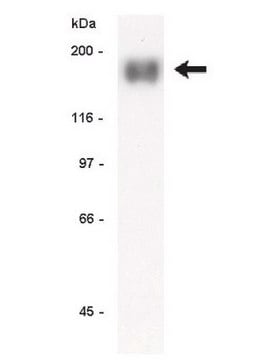GR01L
Anti-EGFR (Ab-1) Mouse mAb (528)
lyophilized, clone 528, Calbiochem®
Synonym(e):
Anti-Epidermal Growth Factor Receptor
About This Item
Empfohlene Produkte
Biologische Quelle
mouse
Qualitätsniveau
Antikörperform
purified antibody
Antikörper-Produkttyp
primary antibodies
Klon
528, monoclonal
Form
lyophilized
Enthält nicht
preservative
Speziesreaktivität
human
Darf nicht reagieren mit
rat, mouse
Hersteller/Markenname
Calbiochem®
Lagerbedingungen
OK to freeze
Isotyp
IgG2a
Versandbedingung
ambient
Lagertemp.
2-8°C
Posttranslationale Modifikation Target
unmodified
Angaben zum Gen
human ... EGFR(1956)
mouse ... Egfr(13649)
rat ... Egf(25313)
Allgemeine Beschreibung
Immunogen
Anwendung
Frozen Sections (2.5 µg/ml)
Immunofluorescence (5 µg/ml)
Immunoprecipitation (1 µg/sample)
Neutralization Studies (see comments and application references)
Paraffin Sections (see application references)
Warnhinweis
Physikalische Form
Rekonstituierung
Hinweis zur Analyse
A-431 cells or skin tissue
Sonstige Hinweise
Masui, H., et al. 1984. Cancer Res.44, 1002.
Reynolds, F. H., Jr., et al. 1981. Nature 292, 259.
Ushiro, H. and Cohen, S. 1980. J. Biol. Chem.255, 8363.
Rechtliche Hinweise
Sie haben nicht das passende Produkt gefunden?
Probieren Sie unser Produkt-Auswahlhilfe. aus.
Lagerklassenschlüssel
11 - Combustible Solids
WGK
WGK 1
Analysenzertifikate (COA)
Suchen Sie nach Analysenzertifikate (COA), indem Sie die Lot-/Chargennummer des Produkts eingeben. Lot- und Chargennummern sind auf dem Produktetikett hinter den Wörtern ‘Lot’ oder ‘Batch’ (Lot oder Charge) zu finden.
Besitzen Sie dieses Produkt bereits?
In der Dokumentenbibliothek finden Sie die Dokumentation zu den Produkten, die Sie kürzlich erworben haben.
Unser Team von Wissenschaftlern verfügt über Erfahrung in allen Forschungsbereichen einschließlich Life Science, Materialwissenschaften, chemischer Synthese, Chromatographie, Analytik und vielen mehr..
Setzen Sie sich mit dem technischen Dienst in Verbindung.
